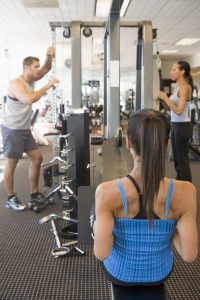In Part One, I talked about Functional Exercise. Click Here if you need to catch up.
Now, it’s time to explore Isolated Exercise. The leg curl (hamstring) machine at the gym or the adductor (inner thigh) machine are traditionally “isolated exercises”. When taking a closer look, they aren’t all that isolated at all…
You Have Seven Hamstring Muscles
Most isolated machines use multiple different muscles at the joint being moved. Take the leg (hamstring) curl machine for example. You have seven muscles that flex your knee, yet they are often grouped and named “hamstrings” as if they’re one muscle. Even the hamstrings themselves break into four different muscles and all have varying roles in the movement of the tibia, fibula and femur.
The adduction machine is using all five adductors at minimum, plus others to accomplish the task of squeezing the legs together. True isolation targets just one or two muscles at a time.
Isolated means single, solitary and secluded; to name a few definitions.
Why is it important to work just a few muscles or an isolated group?
 1. It’s easier to identify weaknesses when isolating muscle groups. You can discover that the hamstrings are stronger than the quads with this method.
1. It’s easier to identify weaknesses when isolating muscle groups. You can discover that the hamstrings are stronger than the quads with this method.
2. You can find specific muscle imbalances and weakness between the right and left sides. One anterior deltoid might be weaker than the other and making a push-up uneven.
3. To target an area that you want to build up for aesthetic reasons. Many clients want to define a certain area of their body. The better you know anatomy and how to isolate muscles, the more likely you can help them meet this sort of goal.
Imbalances and Weakness
Everyone has them. One leg or arm is stronger than the other, one side of the lower back is stronger, etc. You can see it when clients squat, run, plank hold, push-up, etc. Their hips tilt slightly or one knee dives inward. Sometimes it’s subtle and other times it’s very obvious.
The human structure (skeleton) isn’t perfect and neither is muscle balance. Small differences are ok. It’s the big ones that can lead to injuries. Being able to take a closer look at an exercise and identify the weak muscles is one way to insure against potential long-term damage when using the muscles improperly.
For example, if you see one shoulder moving different than the other during a push-up, pay attention to their tricep extension on each arm, their chest fly and their deltoid raises. Do you see an imbalance from the right to left side in these exercises also? If you do, zoom in again. Even in a tricep extension, there are four muscles working.
If there is a difference in deltoid raises, find out if it’s the anterior, middle or posterior deltoid by comparing them on the right and left sides. Is another muscle such as the upper trapezius compensating? What’s their health history for their shoulder?
Keep digging deeper and you’ll get to the root of the problem. If you get stuck, review anatomy – it often holds the answers to these questions.
Try This
Have someone hold both arms out to the side without weight, make sure they have good form and see how long they can hold this position. If it’s too easy, add light weights to their hands – as long as they have good form! Watch their clavicle (collar bone) and neck for slight changes as one side gets more tired than the other. Look at their arm and see if one is rotated more than the other, to recruit different fibers of the deltoid muscle. Watch for the trapezius to start compensating by keeping your eye on the neck. Then, work with them on that side and recruiting the deltoids better by showing them where the muscle attachments are.
With good knowledge of anatomy and movements, you can apply this same concept to every muscle in the body. Improving these small imbalances can unlock the door to larger concerns people come into the gym with, like one leg being more sore than the other or isolated low back pain on one side.
Oh and to answer the question…neither is better. You need both!
Beverly Hosford, MA teaches anatomy and body awareness using a skeleton named Andy, balloons, play-doh, ribbons, guided visualizations, and corrective exercises. She is an instructor, author, and a business coach for fitness professionals. Learn how to help your clients sleep better with in Bev's NFPT Sleep Coach Program and dive deeper into anatomy in her NFPT Fundamentals of Anatomy Course.

